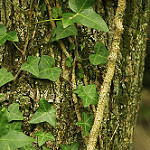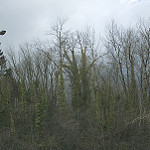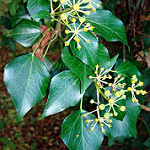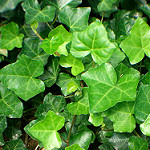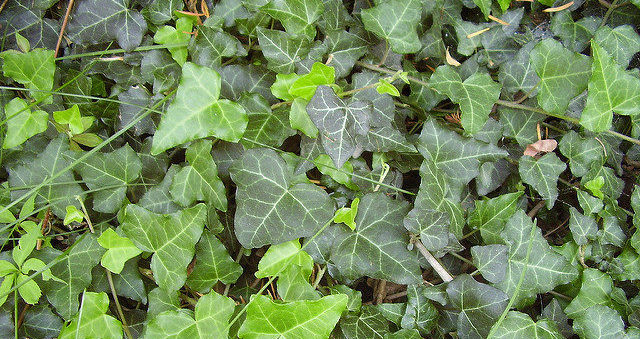During the winter months, English Ivy (Hedera helix), a highly invasive plant species, is very easy to spot thanks to its evergreen foliage. This makes it a great time of year to work on managing and removing it from your yard.
The vines spread along the ground and when they climb up a vertical structure (i.e. tree, building, fence, etc.) they mature and produce seed, which are then eaten and spread by birds. English Ivy can climb up to 90 feet! Ivy is particularly bad for our trees because it uses up water and nutrient resources, blocks out light to the tree, makes it easier for the tree to fall in storms or during ice and snow due to the extra weight, and lastly Ivy will only seed after growing vertically, so it spreads more rapidly when allowed to mature.
So what can you do? Unfortunately this plant is still widely available in nurseries, so the first thing you can do is to not purchase this plant to use in your landscape. Ivy infestations can be overwhelming, so sometimes it’s easier to start by just removing it from vertical surfaces to slow the spread and save the trees.
Use the following technique to cut it off the trees in your yard: https://ivyoutofrichmond.org/english-ivy/how-to-remove-ivy-from-trees/
According to Virginia Department of Conservation and Recreation, “Invasive plants are species intentionally or accidentally introduced by human activity into a region in which they did not evolve and cause harm to natural resources, economic activity or humans.” There are currently 90 identified invasive plant species in Virginia.
